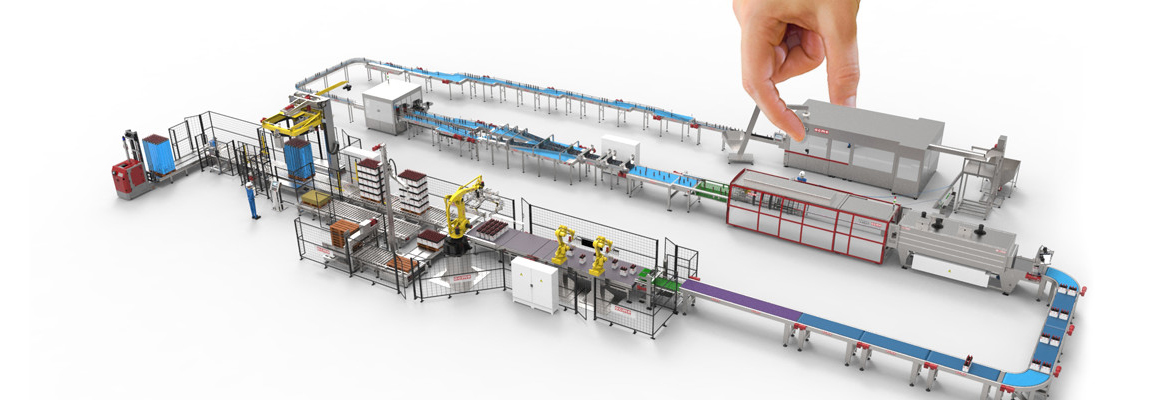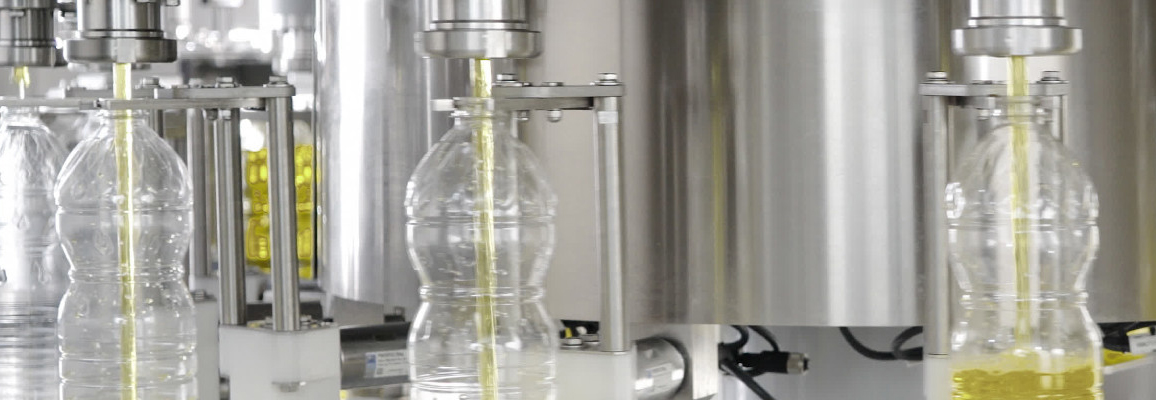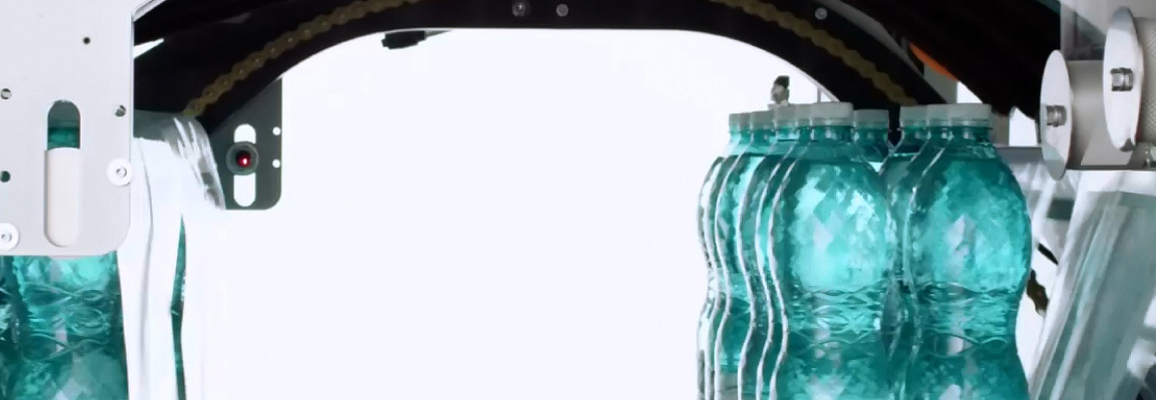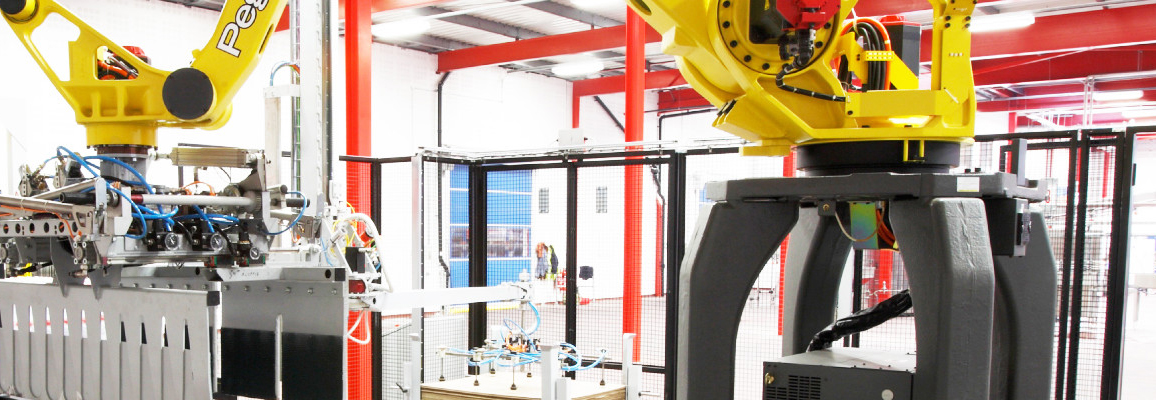
- Offer Profile
- Established in 1954, OCME is a leading packaging machinery company, headquartered in Parma - Italy, and operating globally, providing customers with premium, innovation-based solutions for packaging consumer goods.
OCME SOLUTIONS are designed and manufactured in Emilia Romagna, home of the Italian packaging machinery industry.
Our solutions

-
A FULL RANGE OF TECHNOLOGY AND INNOVATION.
OCME manufactures primary and secondary packaging machines including fillers, end-of-line and logistic machines for different sectors (Beverage, Food, Detergent, Petro-chemical and Tissue).
OCME is not a product provider but a solution provider, anticipating trends through innovation. Filling

-
OCME has always been a point of reference in weight-based filling, and is present in several sectors.
For Lube oil, automotive and edible oil, OCME offers the most suitable solution for the customers' needs.
The high level of technology applied enables the construction of electronic machines processing PET, HDPE, GLASS and SHEET METAL containers.
Furthermore, OCME achieved MID certification for the filling accuracy of its weight fillers, ensuring the correct quantity of filled product. Rotary fillers can produce up to 40.000 containers/hour. The range is completed by in-line fillers for 200L drums, which can produce up to 150 drums/hour. 
Virgo: Rotary Weight Filler for Edible Oil
- Our high performance filler designed for the edible oil sector.
Every sector has a specific need. OCME designed its rotary weight filler to supply the perfect solution for the edible oil field sector. .
Virgo is the new weight filler for edible oil proposed by OCME, ensuring high performance and efficiency. This machine has been conceptualized in such a way to become a unique combo with the Blow Moulder.Virgo, which is flexible and can be realized either with neck or body handling, can satisfy all requirements in terms of production speed and type of containers.
Virgo ensures the highest filling accuracy thanks to its highly advanced electronics based on algorithms developed during 20 years of application.
The rejection system at machine outfeed discards non-conforming product. By the end of the production cycle, all the product inside Virgo is recovered in order to minimize waste.
Virgo is equipped with a control unit dedicated to safety management, ensuring maximum reliability, all including stainless steel and tempered glass perimeter guards . Finally, the machine control and supervisor PC allows to monitor weighing statistics and data logging for each container. This ensures maximum control of production batches.

Libra Flex: New Rotary weight filler with innovative linear motor technology
-
Two machines in one, extremely compact, solution!
OCME, as leader in secondary packaging solutions, is present in that market as Pick & Place machine manufacturer to combine high performance, high quality in less footprint.
Pick and place Scorpius
The concept behind the design, is actually to have two machines in one: a divider – which split the infeed product in separate lanes according to the packaging pattern – and the pick & place cartoning unit.
Products enter che machine – in the staker unit - through a monofilar conveyor. The exact amount of containers is properly dosed by rubber belts and moved from infeed to picking area where a cartesian manipulator, which is equipped with several picking grippers, picks up the containers and gently lays them down into the cartons. To guarantee a very high picking efficiency, the grippers are shaped “around the container” in order to have the same exact negative geometry. In that way it is possible to have a stiff picking avoiding any unwanted obscillation.
Technical data
Scorpius is capable to pack up to 40 cartons/minute. Accepted cartons dimensions from 220mm x 200mm ( H=200mm) up to 500mm x 330mm (H=360mm). Bottle minimum diameter 50mm.
Secondary Packaging

-
The machines developed by OCME for Secondary Packaging offer, both in case of shrink wrapping and wrap-around packing, a wide range of solutions to meet the needs of our customers.
OCME focuses on high efficiency installations with high productivity, destined to various product sectors such ad edible oil, lube oil or beverage.
Our machine performance varies depending on the processed product, ranging from 40 to 150 cycles/minute for shrink-wrap packers, and from 30 to 80 cycles/minute for wrap-around packers and Combi machines. 
VEGA HT
-
Vega HT is the shrink-wrap packer proposed by OCME. In 1986, OCME began developing the shrink-wrapping technology
with a degree of flexibility never reached before.Vega HT is the solution to the problem of handling thinner film and
lighter bottles whilst ensuring total adaptability to different packaging format, reduced changeover times and reduced energy consumption.
Vega HT is available in various versions: film only, flat pad and film, tray and film with flat pad,...
The range is completed by the Vega HT Advance version for high speeds, from 100 to 150 cycles/minute.

ALTAIR HT
-
The first generation of OCME wrap-around packers date back to 1964. They were already ahead of their time since they were installed several years in advance of equivalent competing solutions.
Since then, OCME has followed a programme of continuous development and improvement which has led to the Altair range we have today. OCME focused on high efficiency and high productivity installations, destined to various product sectors such as edible oil, lube oil and beverage.
In addition to producing cartons, OCME's whole range of wrap-around packers offer the possibility to process trays. The complete series proposes as well the possibility to insert partitions (pre-formed or traditionnal).

ALTAIR HT
-
Gemini HT is OCME's combined machine designed to process both wrap-around cartons and trays, with or without film.
Gemini HT combines all the advantages of Altair wrap-around packers and Vega shrink-wrap packers. Our focus is on high efficiency and high productivity installations, destined to various product sectors, such as Edible oil, Lube oil and Beverage.

SCORPIUS
-
Filling machine to revolutionize the change over time!
Standard changeparts are no longer needed thanks to new automatic change over.
The new OCME filling machine born to revolutionize the format change-over concept: the combination of linear motor technology and the innovative flexible puck designed by OCME. This new system allows to overcome the classic approach, intended as a replacement of stars, guides and supports for containers. This flexible handling system where it is the puck to be conveyed inside the machine, this allows us to select the new recipe from HMI with a click and automatic centering according to selected recipe, automatic adjustment of infeed and outfeed.
The gripper fits perfectly the container shape
All this translates into a drastic reduction in container size changeover time, as all you need to do is load the new recipe from the operator panel (one click!) and the machine is ready to run. Libra ensures the highest filling accuracy thanks to its highly advanced electronics based on algorithms developed during 20 years of application. The machine is MID certified (metrological marking on the quantity of filled product).
Palletising & Depalletising

-
Our experience in processing products of different shapes and materials allows us to offer solutions for various sectors.
PALLETISINGOCME, that has always been a point of reference in palletising sector, is present with its products in several sectors.
From beverage to tissue, from food to petrochemical, OCME offers the most suitable solution. The high level of technology applied (numerous patents have been registered) enables the construction of traditional, robotic or mixed technology solutions.
The range of OCME palletisers includes machines with low or high level product infeed, either in-line ot at 90 degrees, equipped with customised row or layer gripping heads, according to the product to be handled.
DEPALLETISINGOCME depalletisers are known all over the world for their strength and reliability.
OCME is present in the Beverage, Food, Home and Personal care, Edible oil and Petrochemical sectors.
Our range of depalletisers includes machines with low or high level product infeed, with steady or moving pallet, with layer transfer by rotating bar or gripping head with self-centring plates. The high level of technology applied enables the construction of traditional or robotic solutions. Palletising

Traditional Palletiser with 90° infeed Perseus
-
Perseus N is our traditional 90° infeed palletiser. Depending on the chosen model, the product infeed level is low (LF-N and Z)
or high (HF-N and HM-N), with steady (LF-N, HF-N and Z) or moving pallet (HM-N).Once the layer has been formed, the product is transferred towards the machine by a pusher and placed onto the pallet, with the possibility to have flat pads being inserted.
The Perseus Z model derived from the N model, with the only difference of the integrated layer pushing system.
The range is completed by the Perseus F model, specifically designed to process 60 L and 200 L drums.

Traditional Palletiser with in line infeed Orion
-
Orion N is our traditional in-line palletiser. Depending on the chosen model, the product's infeed level is low (LF-N and Z)
or high (HM-N), with steady (LF-N and Z) or moving pallet (HM-N).Once the layer has been formed by the Mizar forming unit, the product will be transferred towards the machine and placed onto the pallet, with the possibility to insert flat pads.
The Orion Z model derived from the N model with the only difference of the integrated layer pushing system.
The range is completed by the Orion Advance model, a low level infeed palletiser with double sliding table ensuring high performance with reduced dimensions.
DEPALLETISING

Bulk container Dorado
-
Dorado is our depalletiser for bulk products. Depending on the chosen model, the product infeed level can be either low with steady pallet (LF) or high with moving pallet (HM).
The first phase is the pallet unwrapping cycle. An operator platform enables the pallet to be reached easily, allowing to carry out any necessary operation in the safest possible conditions. Once unwrapped, the pallet can enter the machine.
The layer is transferred by our gripping head, with self-centring plates (LF) or rotating bars (HM). Layer-pads, frames and top sheets are picked up by the dedicated beam or column-type devices. At last, the packs are extracted and proceed in a single row.

Other Depalletiser Antares
-
OCME offers a series of high performance depalletisers, designed to handle various types of packs.
Our range is composed of traditional solutions designed to handle boxes, such as our Antares depalletiser, as well as robotic solutions for bulk trays or containers.
Our experience in handling products of diffehttps://www.ocme.com/en/perseus-p278hnology and innovative solutions to answer all your needs.
Internal Logistic

-
Our LGV vehicles integrate perfectly well to any palletising end-of-line, thanks to a wide range of highly modular and flexible solutions.
In order to meet this demand, our Laser guided vehicles (LGV) movement management application: AGV Manager, as well as various battery change solutions have been developed.These vehicles are free to move at high speed and they are not anchored to structures embedded in the floor, and any change to vehicle routes
can be made by simply modifying the software. 
Powered Stacker Auriga PS
-
Auriga PS is an automatic laser guided vehicle with covering forks.
In low position, the forks cover the rear wheels just like an electrical pallet truck.Thanks to the wheels position in relation to the load being carried, the PS model can move up to 1.500 kg, while being a machine of reduced dimensions.
Auriga PS is therefore ideal to work in reduced space, between production lines for instance, or in warehouses as well.

Counterbalanced Truck Auriga CT
-
Auriga CT are counterbalanced vehicles with forks (like front fork lift truck).
These vehicles are designed for transporting any type of product. The Auriga CT range goes from the smaller model, Auriga 8CT,
ideal to move in reduced space with load capacity of 800 kg, to larger models, such as Auriga 45 CT, used to transport 3 pallets
with maximum load capacity of 4.500 kg.

Conveyor Auriga
-
Auriga C are vehicles equipped with chains, rollers or rubber belt conveyors.
Our conveyor vehicles are designed to move the product from one conveyor to another. The Auriga C range goes from Auriga C1, which transports one single pallet, up to the larger Auriga C4, which transports 4 pallets simultaneously.

Reach Truck Auriga
- Reach your goals with safety and accuracy
Designed to work in high-reach warehouses, this model can move up to 1.400 kg, while being a machine of reduced dimensions.
Auriga RT-H is our industrial-type and fully automated reach truck LGV series designed to lift heavy loads to high heights, with OCME’s technology solutions for navigation, handling and safety aspects. Auriga RT-H vehicle is used to work at significant heights and in reduced space, this model can move up to 1.400 kg, while being a machine of reduced dimensions.
Auriga RT - H has been designed to transport pallets, opened on the picking side. The vehicle can however transport any type of pallet.
Integrated System
- OCME designs and builds integrated systems that work with the efficiency of a single machine producing as a completely synchronized line.
Multiflavour Line Rainbow
Your business

-
The goal of OCME is to supply not only a reliable and high technology range of machines, but much more to find the best system solutions that respond exactly to customers’ needs.
The complete technical support of OCME engineering team, starting from the planning phase, allows customers to develop their business ideas in the most efficient way.
Besides the technical efficiency, all the system solutions proposed by OCME take in highest priority, all the key factors that a high valuable line proposal must have: safety, ergonomics, TCO, sustainability. In the world of turnkey system suppliers, OCME can offer a wide range of services: from feasibility analysis, site surveys and technical specifications, up to line automation, project management and site management. Beverage
-
Our wide and deep experience in the Beverage World meets all Customer needs in terms of high quality, advance technology and flexibility.
Whatever is the container you want to fill – PET Bottles, Glass Bottles, Tetra Bricks or Cans - OCME will find the right solution for you. OCME Engineering team will develop with YOU, the perfect solution you are looking for, by means of a long experience in plant engineering, expert knowledge and Creativity.
This is our main aim: to create a tailor made solution that perfectly matches the available space, the accessibility for operators and raw materials, the analysis of product accumulation, the savings in terms of energy, the safety of the system and its efficiency.
Tissue
-
Tissue experience in OCME started in the 80’s and was based on traditional palletisers; later on, the introduction of robots in the world of “end of line”, changed our approach in this field.
Recently the biggest part of our installations includes robots, with or without a quick layer preforming device, able to handle display packs or bundles. In order to keep on working with the concept of modular systems, we developed a system to use this formation type also in traditional palletising configurations.
Modular systems allow us to design flexible layouts according to the customer's needs and any space restrictions.
Our long time experience added to our very reliable machines show that we can easily work with all scenarios and the fastest and most modern reel rewinders.
Lubricants
-
The OCME systems solutions are mainly based on complete turnkey packaging lines, regardless bottle type (HDPE, metal), size and production speed.
The long term experience of OCME to handle lube oil packaging solutions (since the foundation date, 1954) has allowed us to establish long term relationships with all the biggest worldwide lube oil producers.
From these co-operations, a continuous improvement process has been set-up, leading OCME higly advacned quality controls: weight accuracy, caps control, labels position, coding controls on bottles and cartons. Our LIS enables us to collect productions data and quality controls data, for dedicated overall efficiency analysis. The deep knowledge of the sector allows the engineering team, whenever necessary, to integrate the most suitable third parties machineries available on the market.
Home & Personal Care
-
The relevant technical background, allows OCME to propose turnkey solutions for packaging lines of viscous liquids, including detergents (home and personal care), pharmaceutical and chemical applications.
Thanks to highly customized solutions, OCME has developed packaging lines for the biggest multinational brands, managing all the technical challenges coming from very specific containers, caps and labels. It is important to also underline, as a key success factor, OCME's capability to integrate third party machines and the wide range of OCME machines that also covers the warehouse logistics needs, with the LGV Auriga vehicles.
Food
-
OCME began its history in 1954, filling tomato cans, and still continues today in the food industry thanks to experience acquired over the years.
We are able to operate in different fields in terms of secondary packing, handling and palletising. Our machine range goes from wraparound, shrink-wrapping machines up to traditional or robot palletizing systems often connected by our handling systems. Talking about performances, we can cover from medium (30cpm) to high speed (180cpm) by means of the reliability and accuracy of our machines. Entrust the heart of your business to our specialized team of engineers .
